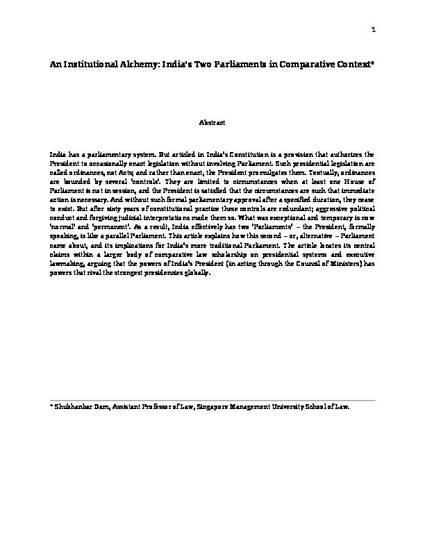
India has a parliamentary system. But articled in India’s Constitution is a provision that authorizes the President to occasionally enact legislation without involving Parliament. Such presidential legislation are called ordinances, not Acts; and rather than enact, the President promulgates them. Textually, ordinances are bounded by several ‘controls’. They are limited to circumstances when at least one House of Parliament is not in session, and the President is satisfied that the circumstances are such that immediate action is necessary. And without such formal parliamentary approval after a specified duration, they cease to exist. But after sixty years of constitutional practice these controls are redundant; aggressive political conduct and forgiving judicial interpretations made them so. What was exceptional and temporary is now ‘normal’ and ‘permanent’. As a result, India effectively has two ‘Parliaments’ – the President, formally speaking, is like a parallel Parliament. This article explains how this second – or, alternative – Parliament came about, and its implications for India’s more traditional Parliament. The article locates its central claims within a larger body of comparative law scholarship on presidential systems and executive lawmaking, arguing that the powers of India’s President (in acting through the Council of Ministers) rival the strongest presidencies globally.
- executive lawmaking,
- cabinet,
- presidential powers,
- parliamentary system,
- India
Available at: http://works.bepress.com/shubhankar_dam/13/
